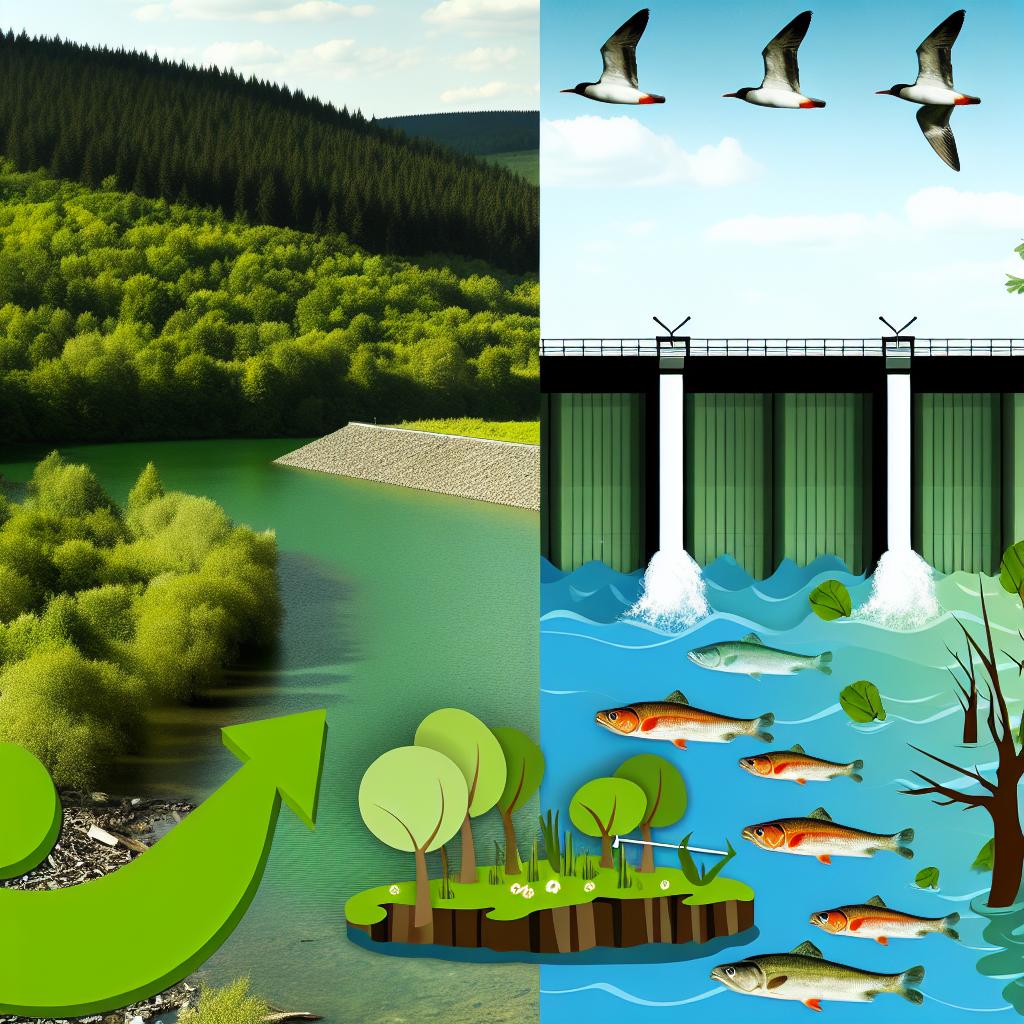
Introduction
Hydropower has long been recognized as a significant source of renewable energy, contributing to global efforts in reducing reliance on fossil fuels. With concerns over carbon emissions and climate change, hydropower presents itself as a green energy source with both beneficial and challenging aspects. This article examines the various pros and cons of hydropower to provide a balanced perspective on its role in sustainable energy systems.
Advantages of Hydropower
Hydropower is lauded for several key advantages that make it an appealing option for energy production.
Renewable Energy Source
At its core, hydropower is fueled by the natural water cycle, which makes it a renewable resource. This characteristic is integral, as it distinguishes hydropower from conventional energy forms that depend on finite resources, such as coal, oil, or natural gas. Unlike these fossil fuels, the fundamental driver of hydropower is the earth’s hydrological cycle. Precipitation replenishes rivers and reservoirs continually, thus ensuring an ongoing supply of water to generate electricity. Consequently, as long as the natural hydrological processes continue—notably the evaporation of water, rainfall, and the flow of water bodies—hydropower remains a viable method for generating electricity.
Low Emissions
One of the most compelling arguments for hydropower is its environmentally friendly nature. Rather than burning fuel to generate electricity, hydropower plants harness kinetic energy from flowing water. Therefore, unlike fossil fuels, hydropower plants do not produce direct carbon dioxide emissions, significantly reducing the carbon footprint associated with energy production. This feature makes hydropower an attractive option for countries striving to meet international climate targets by lowering their greenhouse gas emissions.
Reliable and Cost-Effective
Hydropower plants offer a reliable source of electricity. These systems are adept at meeting base load energy needs due to their capacity for continuous power output. Hydropower facilities can also quickly adjust to fluctuations in demand, providing peak load support more efficiently than many other forms of energy. Over the long term, hydropower is often considered cost-effective because of its low operational and maintenance costs following the initial establishment of infrastructure. As technology advances, the efficiency and longevity of hydropower equipment further improve cost-effectiveness.
Additional Benefits
Beyond electricity generation, hydropower facilities can offer additional advantages. For example, they play a vital role in water supply regulation, ensuring consistent availability of water during dry spells. Moreover, these facilities contribute to agricultural irrigation, supporting food production in various regions. Furthermore, the reservoirs and lakes formed by hydropower projects can become centers for recreational activities like boating and fishing, adding social and economic value to the community. Additionally, strategically placed dams can provide flood control, shielding certain regions from natural disasters by regulating river flow.
Challenges of Hydropower
Despite these advantages, hydropower is not without its challenges, which can limit its appeal in certain situations.
Environmental Impact
The construction of hydropower plants can have significant environmental impacts. Dams and reservoirs can alter local ecosystems, affecting fish populations and disrupt natural water flow. These alterations often lead to habitat loss for various species and degradation of aquatic environments. Building a dam can transform a free-flowing river into a static reservoir, which can severely impact biodiversity in the area. Additionally, the creation of large reservoirs can result in the inundation of vast tracts of land, disturbing terrestrial ecosystems.
High Initial Costs
The initial cost of building hydropower facilities is generally high. Infrastructure investments for dam construction, turbines, and associated equipment require substantial capital, which can be a deterrent for some projects. Stakeholders must consider the long-term returns on this significant capital outlay, which are often justified by the plant’s longevity and low operating costs over time. However, the financial barriers can be significant, particularly for developing regions where upfront capital is limited.
Geographical Limitations
Not all regions are suitable for hydropower development. The availability of water sources with sufficient flow and elevation differences is critical. Hence, geographical limitations can restrict the deployment of hydropower across different areas. The best sites are often located in remote or mountainous regions, which can add logistical and economic complexities to the development process. Moreover, environmental considerations—such as preserving natural landscapes or existing economic uses, like fisheries—can further restrict feasible sites.
Potential Social Impact
Hydropower projects can lead to the displacement of communities, as well as cultural and historical disturbances. The creation of reservoirs often necessitates relocating people, which can disrupt lives and livelihoods. In some cases, entire communities have to move, losing ancestral lands and cultural heritage. Alongside social displacement, these projects can flood areas of historical and cultural significance, causing an irreplaceable loss of heritage.
Conclusion
Hydropower stands out as a prominent player in the realm of renewable energy. Its ability to generate electricity with low emissions and its renewable nature makes it a key contender in the fight against climate change. However, it is crucial to weigh these benefits against the potential environmental and social challenges. For those interested in learning more about renewable energy options, consider exploring reputable sources, such as the International Energy Agency.
In conclusion, while hydropower offers notable advantages, it is essential to undertake careful planning and consideration to mitigate its downsides, ensuring it remains a sustainable component of the global energy matrix. This necessitates a thorough assessment of potential sites and a careful balance of ecological, economic, and social criteria in the decision-making process. By doing so, hydropower can continue to contribute effectively to global renewable energy goals, solidifying its role in our sustainable future.